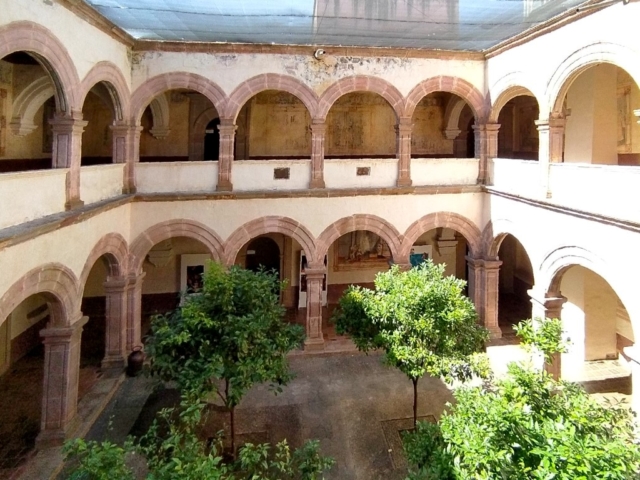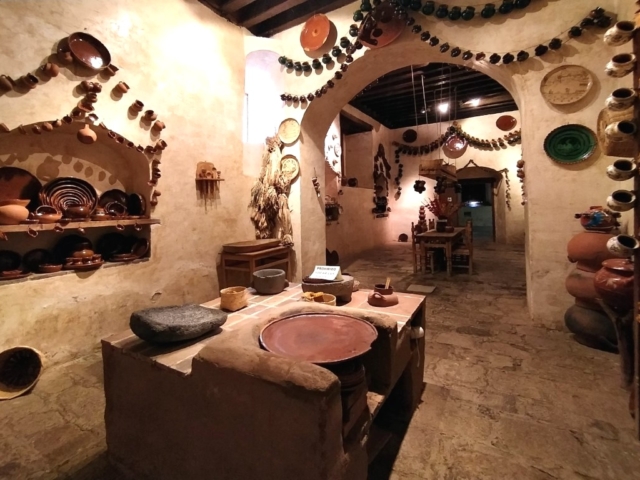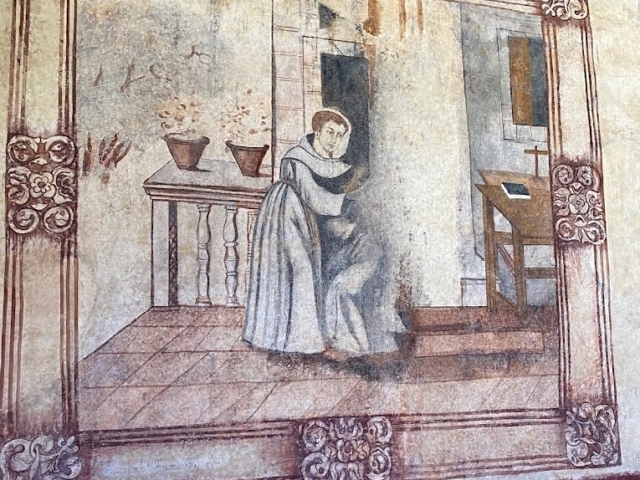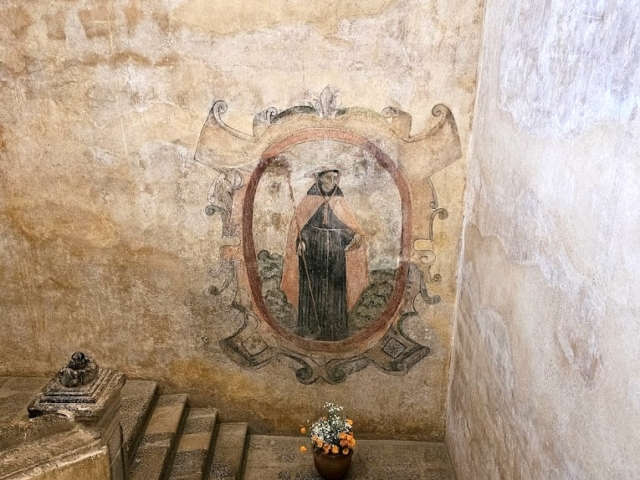
Adress
Convento s/n, Plaza Principal, Centro, 58440 Tzintzuntzan, Michoacán, México.
GPS
19.626102099811, -101.5785605201
Phone
Send an Email to
Monday
10:00 – 17:00
Tuesday
10:00 – 17:00
Wednesday
10:00 – 17:00
Thursday
10:00 – 17:00
Friday
10:00 – 17:00
Saturday
10:00 – 17:00
Sunday
10:00 – 17:00
KNOW MORE PLACES
VISITA OTRAS LOCALIDADES
The Santa Ana Convent was the first one founded in Michoacán by the Franciscan order; its construction began at the end of the 16th century, around 1570, and was completed in the 17th century. In the imposing complex, one can appreciate the Plateresque and Baroque architectural styles, the pre-Hispanic janamus (stone slabs), two temples open to worship, a pair of open chapels; the remains of the Indian hospital, fresco murals from the 16th to the 19th centuries and what is perhaps the only baptismal font for immersion registered in our country.
In early 2006, the Tzintzuntzan Community Cultural Center was created - which is in charge of the convent and the museum - and that same year the second stage of the comprehensive restoration of the complex began. In 2012, it reopened its doors to show visitors, through a tour of the architectural-conventual space itself and the Museum, the historical importance of Tzintzuntzan from pre-Hispanic times as the capital of the Purépecha empire, during the first stage of the viceroyalty as a center radiating evangelization and, finally, today as a community that has inserted itself creatively into modernity without renouncing its essence and traditions. The museum was inaugurated on November 21, 2012 by the now ex-President Felipe Calderón.
Throughout the tour, visitors will be able to learn about the main characteristics of the convent complex and its ancient uses, as well as the history of this community from pre-Hispanic times to the 21st century. The latter is visible from the collections of the Museum itself and others from the Regional Museum of Michoacán (36 objects) and the Casa de Morelos Museum (2 objects), both based in Morelia and belonging to the National Institute of Anthropology and History.
The site is thematically divided into three large blocks: Pre-Hispanic, Viceroyalty and Tzintzuntzan today. The first of these addresses the time and space of the Purépecha empire, which flourished during the Postclassic and became the second largest and most important in Mesoamerica after the Mexica; the origins of the Purépecha, a fusion of islanders and farmers with Chichimecas-Uacúsecha from the north, a mixture from which emerged a civilization with unique architecture, advanced metallurgy and sophisticated pottery, skilled in the use and trade of turquoise; the enigmas of its language; the establishment of Tzintzuntzan as the political and religious center of the empire; its stratified and complex social and administrative structure; the economy; war; worldview and knowledge, as well as some complementary sections such as The Administration of Justice and Commerce and Markets.
The two rooms dedicated to the “Viceroyalty” deal with the end of the dream of the Uacusecha lineage with the Conquest and the fusion of two races, two cultures, two visions of the world, which wove the framework of colonial mestizaje. Difficult times in which the ancestral Tzintzuntzan was stripped of its titles and its status as provincial capital, despite which it did not cease in its fight to recover them and created, together with viceregal authorities and friars, admirable institutions such as the Indian republic and the hospital for natives. This section includes the following documents: The conquest of Mexico-Tenochtitlan, The Spanish arrive at Tzintzuntzan, The last cazonci, Evangelization, The Franciscans, Don Vasco and the Second Audience, The transfer of the cathedral seat, Tzintzuntzan in the Viceroyalty, Secularization of the clergy and others of a complementary nature.
El último segmento, “Tzintzuntzan hoy”, se plantea como un espacio vivo que invita a la participación activa de la comunidad; son presentadas piezas artesanales, de manufactura tzintzuntzeña, como muebles de chuspata, piezas de popotillo y cerámica, donde el visitante podrá tomar parte en la relectura de la historia de lo que fue la capital del imperio purépecha.
It should be noted that the information sheets placed along the route are presented in three languages: Spanish, English and Purépecha (on room sheets).














